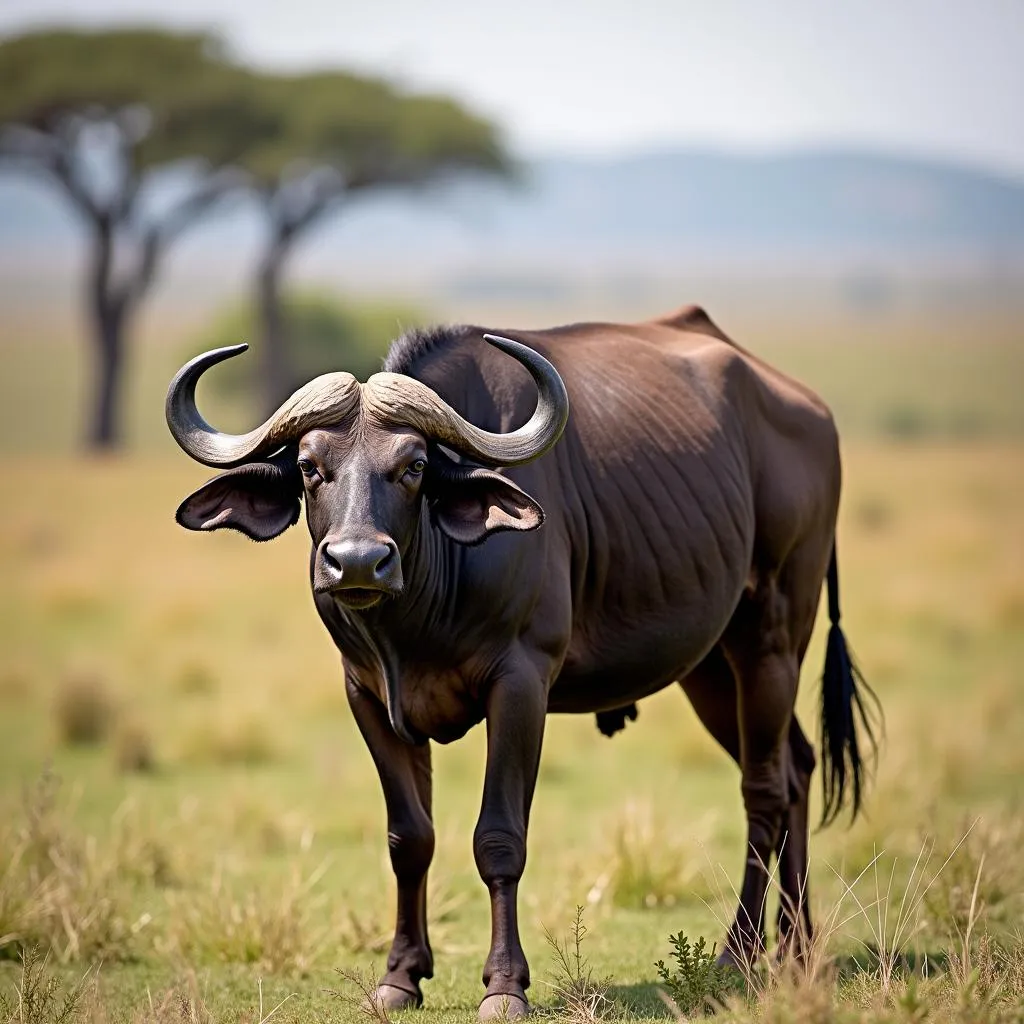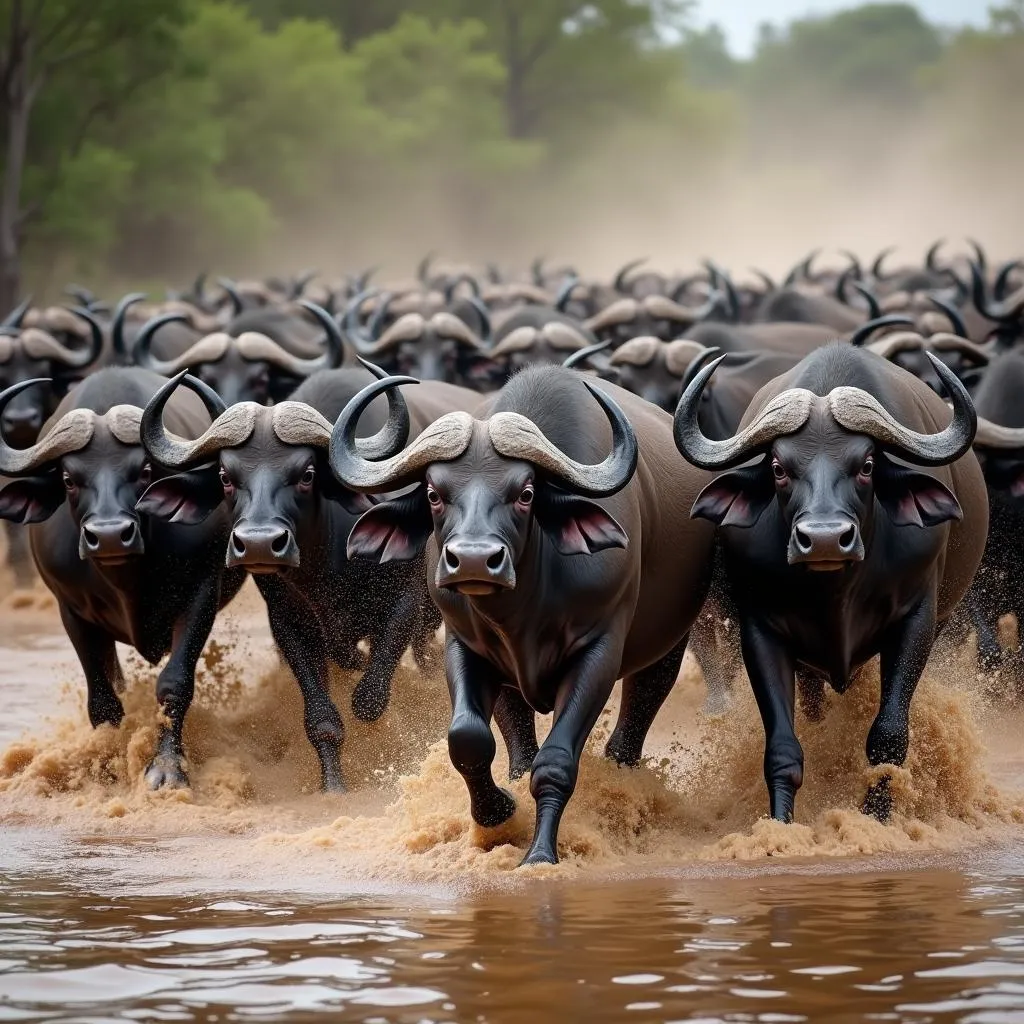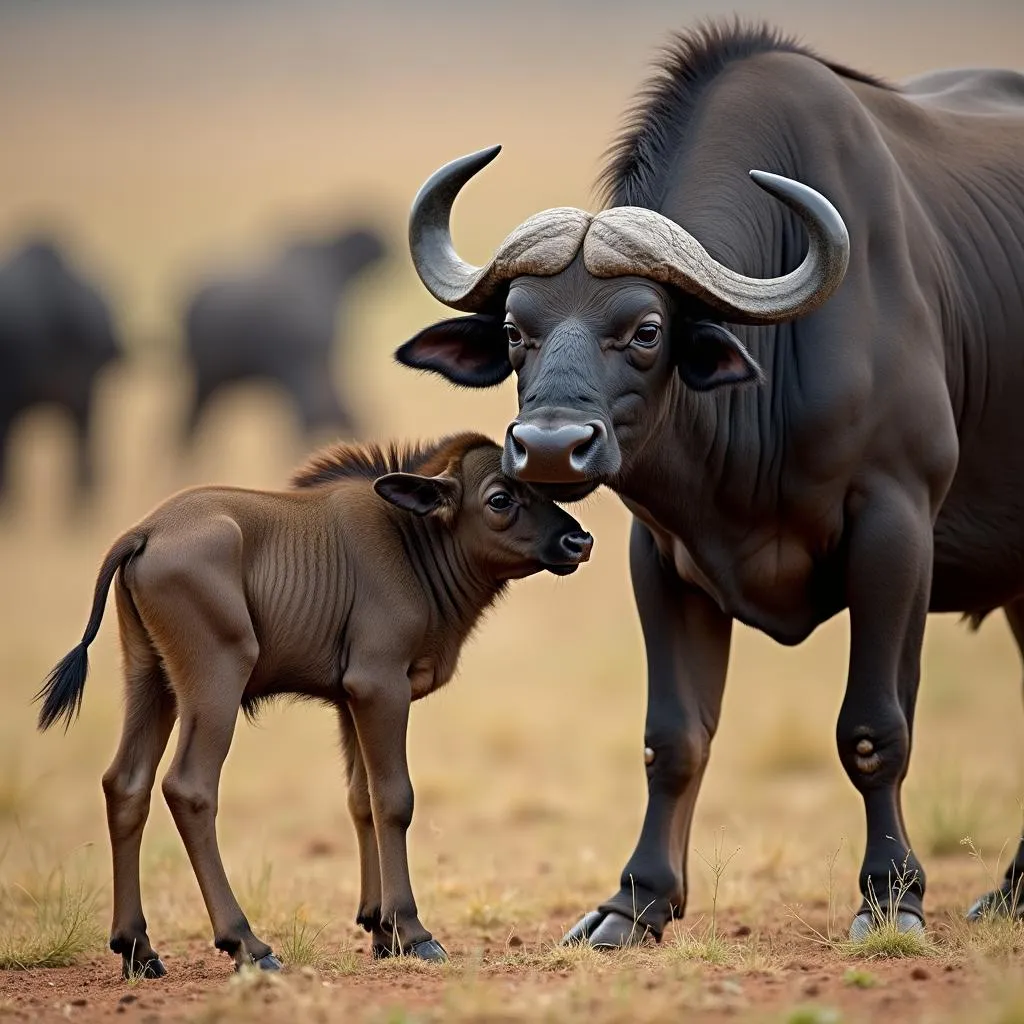Unveiling the African Cape Buffalo: The Black Death of the Savannah
The African Cape buffalo, scientifically known as Syncerus caffer, is an iconic inhabitant of the African plains and woodlands. Often referred to as the “Black Death,” this formidable creature has a reputation for its unpredictable temperament and impressive size. This article delves into the fascinating world of African Cape Buffalos, exploring their physical characteristics, social behavior, ecological role, and the challenges they face in the modern world.
 African Cape Buffalo grazing in the Savannah
African Cape Buffalo grazing in the Savannah
A Colossus of the Grasslands: Physical Characteristics
African Cape buffalos are among the largest bovids in the world, with males (bulls) being significantly larger than females (cows). Bulls can reach a shoulder height of up to 1.8 meters (6 feet) and weigh up to 900 kilograms (2,000 pounds). Both sexes possess the distinctive curved horns that form a characteristic “boss” over their heads. The horns can grow up to 1 meter (3.3 feet) in length, serving as both weapons and shields during confrontations. Their thick, dark brown to black hide provides protection against predators and parasites.
The Herd Instinct: Social Behavior of Cape Buffalos
African Cape buffalos are highly social animals, living in herds that can range in size from a few dozen to several hundred individuals. These herds are typically led by a dominant bull, who maintains his position through displays of strength and aggression. Within the herd, there is a complex social hierarchy among females, based on age, size, and lineage. The strong social bonds within the herd provide protection against predators and enhance their foraging efficiency.
 Herd of African Cape Buffalos Crossing a River
Herd of African Cape Buffalos Crossing a River
The Circle of Life: Ecological Significance
As herbivores, African Cape buffalos play a crucial role in their ecosystem. Their grazing habits influence vegetation structure and composition, impacting other herbivores and the overall biodiversity of the savanna. They are also an important prey species for large predators such as lions, leopards, and spotted hyenas, contributing to the balance of the food web.
What sound does an African buffalo make?
Unlike the mooing of cows, African buffalos communicate with a variety of grunts, snorts, and rumbling calls. These vocalizations play a crucial role in maintaining herd cohesion, signaling danger, and coordinating movements during migrations.
Where can you find African Cape buffalos?
African Cape buffalos are widely distributed across sub-Saharan Africa, inhabiting a variety of habitats, including savannas, grasslands, woodlands, and swamps. Their presence is often associated with permanent water sources, which are essential for their survival.
Threats and Conservation: Navigating a Changing World
Despite their formidable reputation, African Cape buffalos face several threats in the 21st century. Habitat loss and fragmentation due to human encroachment, agricultural expansion, and infrastructure development are major concerns. Additionally, diseases such as rinderpest and bovine tuberculosis pose significant risks to buffalo populations.
Are African Cape buffalos endangered?
While not currently classified as endangered by the IUCN, the African Cape buffalo is listed as a species of “Least Concern.” However, their populations are declining in some areas due to the aforementioned threats.
 African Cape Buffalo Calf with its Mother
African Cape Buffalo Calf with its Mother
The Future of the “Black Death”
Conservation efforts are crucial to ensure the long-term survival of African Cape buffalos. Protected areas, such as national parks and game reserves, play a vital role in safeguarding their populations and habitats. Sustainable land management practices, community-based conservation initiatives, and anti-poaching efforts are also essential to mitigate the threats they face. By addressing these challenges, we can help secure the future of this iconic African species for generations to come.
Frequently Asked Questions About African Cape Buffalos:
-
What is the difference between an African Cape buffalo and an American bison? While both species are large, horned herbivores, they are not closely related. African Cape buffalos are native to Africa, while American bison are found in North America. They also have distinct physical characteristics and social structures. You can find more information about African animals here.
-
How dangerous are African Cape buffalos? African Cape buffalos are wild animals with unpredictable temperaments and should always be treated with caution and respect. They are known to charge without warning and have been responsible for human fatalities.
-
What is the lifespan of an African Cape buffalo? In the wild, African Cape buffalos can live for up to 20 years.
Interested in Learning More About African beast?
Contact us today! Our team at African Life is dedicated to sharing the wonders of the African continent with the world.
Get in touch:
- Phone: +255768904061
- Email: [email protected]
- Visit us: Mbarali DC Mawindi, Kangaga, Tanzania
We have a 24/7 customer service team ready to assist you!

